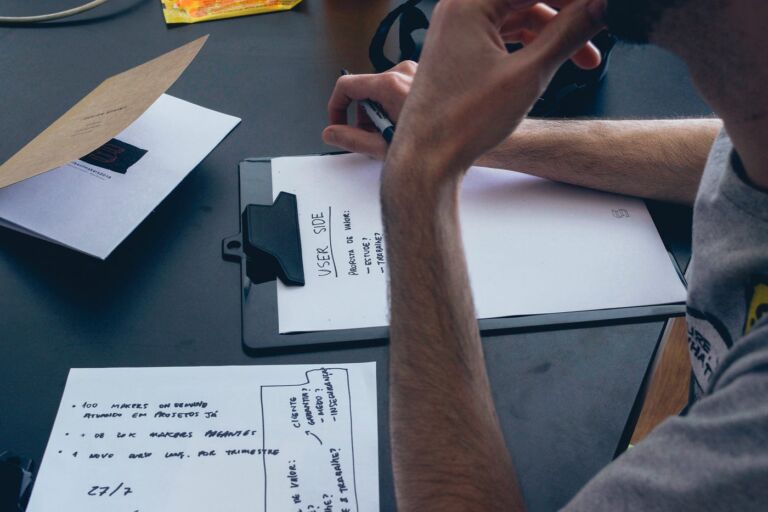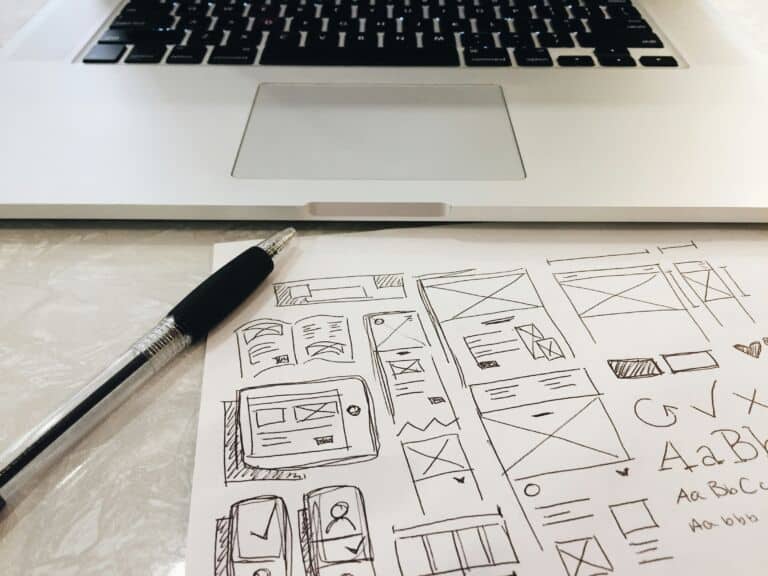The term “AI-generated content” refers to the automated generation of dynamic, customized text, pictures, and videos for websites via machine learning algorithms. This technology enables for the creation of unique layouts and personalized website copy based on user preferences. It’s more than just a notion; it’s a reality that influences all aspects of web design, from product descriptions to interactive images.
What is AI-generated content, and how does it work?
AI-generated content refers to texts, images, videos, or other interactive media formats created with the help of artificial intelligence algorithms. These systems analyze great inputs of data, user behaviors, and other contextual elements to produce content much like what humans would generate. AI can generate blog posts, product descriptions, chatbot responses, and even whole websites by understanding design patterns and language models.
Tools like GPT models are used to make natural, coherent, and relevant content in a way that allows web designers to automate what was earlier reserved for people.
Advantages of AI-generated content in website design
AI-generated content supports designers in a range of ways: saving time by being able to rely on AI to create wireframes, draft copy, or suggest design elements that may appeal to user preferences. It allows designers to focus on creativity and leave routine tasks to AI. Just as important, AI-generated content will help maintain consistency across multiple channels, leading to tighter brand messaging.
It also helps in the creation of better experiences, hence more engagement and conversions, through the analysis of data about user behavior. Other benefits include scalability since AI can generate content for a large website rather quickly and efficiently.
The Challenges and Limitations of AI-Generated Content
However, AI-generated content has its limitations in web design. There exists the lack of a humanly intuitive sense among the major challenges. Art may not be able to capture things of emotional depth or subtle, cultural nuances that a human designer would take in as second nature. Also, the originality of the content might pose a problem.
Although AI can indeed come up with new things by synthesizing what already exists, it is often not able to create anything very original. Other downsides include the fact that this can lead to overly similar designs when too many companies are using this technology in design or a loss of brand uniqueness. Finally, the risk involves an AI tool misinterpreting data and generating disturbingly inappropriate content.
Tips for Integrating AI-Generated Content into Your Website Design Strategy
The best way to effectively implement AI-generated content into your web design strategy is first and foremost to consider where automation can help streamline processes. Then, use AI to automate everything repetitive in creation-for example, summaries of blogs or descriptions of products. It’s all about achieving that balance between human creativity and AI efficiency.
Ensure that AI-generated content always goes under your review and refinement to fit into your brand voice and values. Leverage personalization capabilities with AI tools for improving user experience; just ensure that performance is monitored against ethical considerations.
The Future of AI-Generated Content and Its Effect on the Web Design Industry
The future of AI-generated content within web design is indeed bright. With continuous developments in AI, it is also likely to become increasingly sophisticated in creating not just content but complex web structures and designs. It could be that, in the future, AI will take over even the most intricate parts of web development and leave the designers to focus on only creativity and strategy.
Equally possible is a democratization of web design in which even non-specialists, with little technical knowledge, can create professional-looking websites. But as AI grows, so will it reshape the job market and compel the web designer to adapt and grow his skills to remain relevant.

Some common misconceptions about AI-generated content in website design
There exist several misconceptions regarding the use of AI-generated content in web design. A very common myth is that AI will altogether replace human designers. The reality is that it’s a tool to assist designers rather than replace them. It helps designers add a personal touch to the website design so that it may stand out and not appear as all the generic designs being created by AI.
The other misconception holds that AI-generated content is not creative. On one hand, though AI does not have as much imagination as humans do, it indeed solves and comes up with ideas based on information and algorithms.
Others think AI is too complicated to be implemented in web design. However, this cannot be further from the truth since many AI tools are user-friendly to the extent that people with low technical know-how can still use them.
Another important consideration is the fact that AI algorithms are only as good as the data that feeds them. The important point here is to remember that AI content is not perfect and needs to be continuously monitored and tailored to make sure it meets your objectives.
How AI-generated content compares to traditional website design methods
Comparing the results of AI-generated content to the traditional ways of designing websites shows clear-cut advantages in front of speed, efficiency, and scalability. The older methods call for human labor and are extremely time-consuming-especially if the website is large. AI automates most of these tasks and hence allows for faster delivery while reducing costs.
The traditional design methods do give you more flexibility and customization. Human designers can have their designs out of the box, which might be hard to achieve with AI. The most effective way, therefore, is the hybrid of both AI and traditional approaches. This allows different strengths to be tapped into the making of more efficient and distinctive designs.
Conclusion
The future of web design does not include replacing human ingenuity with algorithms. Instead, it is about the collaboration of artificial and human intellect. Collaboration between web designers and artificial intelligence will usher in a new age of customized, interactive experiences suited to individual requirements and ideals.







